
 Data Structure
Data Structure Networking
Networking RDBMS
RDBMS Operating System
Operating System Java
Java MS Excel
MS Excel iOS
iOS HTML
HTML CSS
CSS Android
Android Python
Python C Programming
C Programming C++
C++ C#
C# MongoDB
MongoDB MySQL
MySQL Javascript
Javascript PHP
PHP
- Selected Reading
- UPSC IAS Exams Notes
- Developer's Best Practices
- Questions and Answers
- Effective Resume Writing
- HR Interview Questions
- Computer Glossary
- Who is Who
Natural Killer Cells or Large Granular Lymphocytes (LGL) - Functions and Applications
Introduction
Natural killer cells or NK cells are a type of lymphocytes derived from lymphoid stem cells. These are the important components of innate immunity and eliminate pathogens by releasing some chemicals called cytokines which are similar to the ones produced by the T cells. Natural killer cells are indeed the lethal weapons of the immune system.
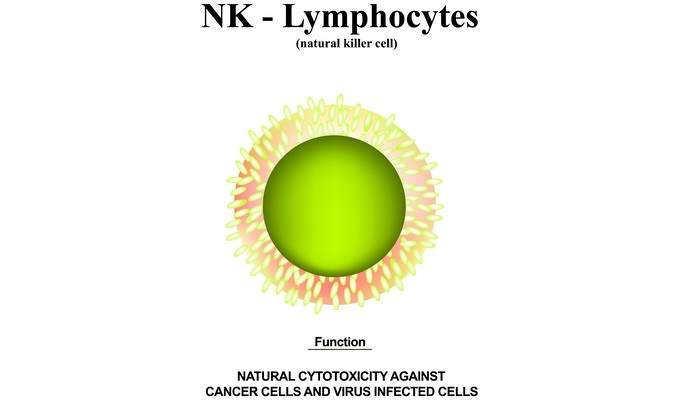
Properties of NK Cells
A few properties of NK cells are discussed below ?
NK cells constitute only 5-10% of the lymphocytes.
These NK cells are large granular lymphocytes that contain a large round nucleus when compared to RBC.
NK cells are non-phagocytic in nature. These do not require presentation by the MHC molecules, hence NK cells are not MHC restricted.
NK can stick to the other cells through a sticking mechanism called natural killer cell adhesion molecule NK-CAM which has CD56. CD56 acts as a marker for identifying the cell adhesion molecule present on the NK cells.
There are granules present in the cytoplasm of the NK cells and these contain the preformed biologically potent molecules.
Some of these granules have the capability to form pores in the target cells resulting in their lysis. Some other molecules induce the apoptosis of the target cell.
Functions of NK Cells in the Identification of Pathogen
NK cells usually have 2 arms -
Activating arm also called as NKG2D.
Inhibitory arm.
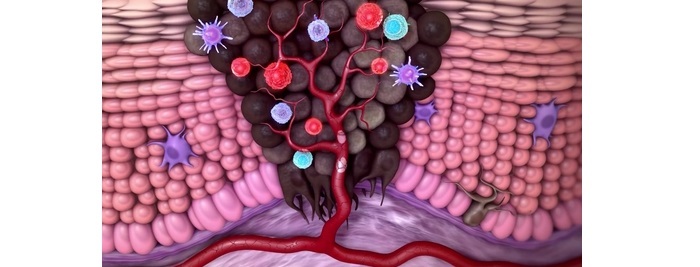
Regulation of NKG2D-Dependent NK Cell Functions
Under normal circumstances, the inhibitory arm binds to the MHC-I present on all the nucleated self-cells of the body. MHC major histocompatibility complex I as a big molecule that has a lot of HLA proteins. Out of all the HLA, MHC I typically expresses HLA-E proteins which is the self-recognition target of NK cells.
So when a virus or cancer cell enters the target cell, expression of MHC I decreases and the inhibitory arm of NK cells does not get to bind to MHC I Then the activating arm will get activated and kills the target cell either by
FAS-FASL pathway
Or by Perforin-Granzyme pathway
Hence NK cells are considered stress surveillance cells which recognize the problem in target cells and act upon it.
When the target or infected cells are coated by IgG antibodies and cannot lyse the cell, these cells are known as sensitized cells. Such sensitized cells are identified by the NK cells that have CD16. These CD16 can recognize the Fc receptors of the IgG antibodies coating the target cells.
Then the NK cells immediately kill such sensitized cells. This mechanism is called antibody-dependent cellular cytotoxicity ADCC. Killing the target cells through ADCC comes under type II hypersensitivity reactions.
Defense Mechanisms
NK cells can also produce some cytokines and can even respond to certain cytokines. NK cells act as a defense to fight against both the intra and extracellular pathogens.
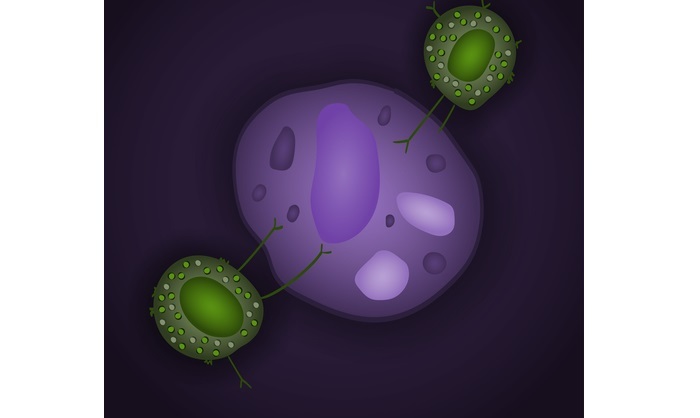
Innate immune system: natural killer cells with pathogen
Against Intra-Cellular Pathogens like viruses
When the cell is infected with the virus, the cell secretes type I interferons which later bind to the interferon receptors present on the NK cells. This binding results in the activation of the NK cells which leads to the proliferation and differentiation resulting in effector NK cells.
These effector NK cells have the capability to recognize the cells which are infected by the viruses using the specific receptors present on their surface. These receptors recognize the altered proteins on the surface of the infected cells. NK cells then come into contact with the infected cells through the receptors. This binding results in the fusion of granules of NK cells to its plasma membrane which then shoots out into the target cell.
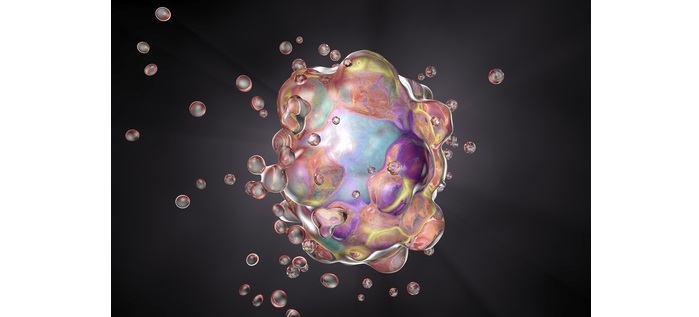
Cell apoptosis illustration
These granules contain toxic proteins called as cytotoxins. Examples include ?
Perforins: These gets inserted into the plasma membrane of the target cell and creates pores in the membrane. This leads to the cytolysis of the target cell.
Granzyme: These proteins induce the process of apoptosis of the target cell.
Thus NK cells result in the killing of the infected cell either by cytolysis or by apoptosis which is said to be programmed cell death.
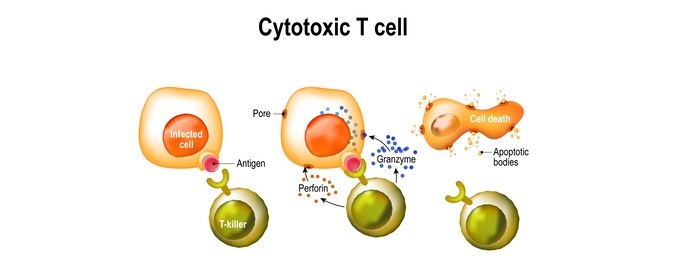
Against Extra-Cellular Pathogens
NK cells are non-phagocytic cells so they cannot kill extracellular pathogens directly.
In such cases, NK cells secrete the type II interferons or INF-? that act as the macrophage activator factor that are these interferons once released by natural killer cells bind to the specific receptors on the macrophages.
This binding enhances the phagocytic activity of the macrophages leading to the destruction of the target cells or pathogens.
Here the interleukins 12 or IL12 which are released by the macrophages stimulates the NK cells to release the INF gamma which in turn activates the macrophages to kill the pathogens.
Applications of NK Cells in Immunotherapy or Cell Therapy
Within the innate immune system, NK cells are the major cytotoxic lymphocytes. These circulate in our blood and reside in lymph nodes and other lymphoid organs like the spleen. NK cells come to play to eradicate the cancer cells as they arise and provide an adaptive immune system. The surveillance by NK cells in healthy individuals rise a rapid response to tumor formation. These reactions to tumorigenesis are independent of T-cell immunity.
So understanding tumor specific NK cell responses is essential to maximize their therapeutic potential in cancer treatment. When NK binds to the cancer cells they form an immune synapse by binding to the specific receptors and initiate a cascade of signals. This moves the NK cells from resting state to activated form where they can kill the cancer cells.
In the absence of some cancer signaling ligands prevents the whole activation and triggering of NK cells. These NK resistant cells become more prevalent and growing tumor ignored by these NK cells leads to the development of cancer.
-
So in the therapy, providing NK cells with additional signaling ligands results in the loss of cancer cells. INKmune is a suspension of innate tumor cells which are delivered intravenously, these circulate in the blood and bind to resting NK cells.
INKmune cells have several thousands of molecules which instigate resting NK cells to the point where they no longer need activating ligands in the existing cancer cells. These INKmune primed NK cells then later acts on the NK resistant cancer cells.
-
Some cancer cells can make them invisible to the NK cells. So genetically modified NK cells are sent to find these cancer cells. This is called as CAR NK therapy. Here the NK cells collected from umbilical cord blood donated after the baby's birth and introduce CAR (chimeric antigen receptor) to the NK cell.
CAR NK cells now find the cancer cells and destroy them. This therapy is done in 2 steps. At first 3 days of chemotherapy is given to make the body ready for CAR NK therapy. As a 2nd step after 2 days CAR NK cells are given through vein.
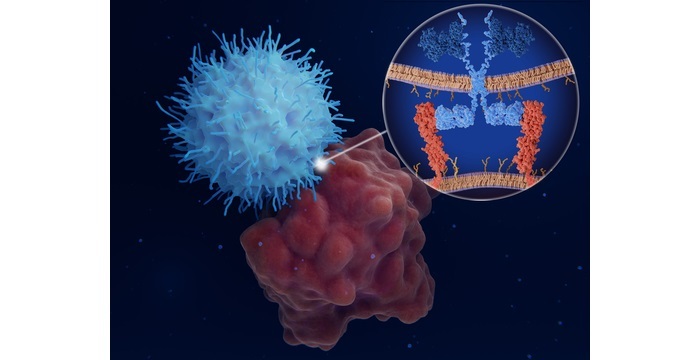
Chimeric antigen receptor CAR therapy: Engineered natural killer cell attacks a cancer cell
Recent Studies
Recent studies suggest that NK cells could be a type of innate lymphoid cells where they can act as TH cells producing the cytokines but do not possess T cell receptors.
Also recent updates say that there are NK-T cells which are actually the T cells that possess the markers of NK cells like CD156 and CD56. These NK-T cells recognize glycolipids which are presented by MHC-like molecules that are identified by CD1. Hence these NK-T cells are said to be CD1-restricted immune cells. A lot of research is going on in this area.
Conclusion
NK cells can be identified using the two markers which are CD16 and CD56. As a part of innate immunity, these NK cells are involved in producing the INF gamma (cytokines) molecules which can recognize the macrophage receptors and lead to the increase in phagocytic activity of the macrophages and the destruction of the pathogens.
This property or function is also exhibited by the helper T (TH1) cells. IL12 proteins released by the macrophages support the release of INF gamma from NK cells. Apart from these NK cells are also stimulated by two other interleukins IL2 and IL15 which come from the gamma receptor of the cytokines.
IL2 is produced by TH1 cells and has three major functions activating the NK cells, stimulating TH1 cells, and activating the regulatory T cells. T reg cells have IL2 receptors which can be identified by CD25 markers.

